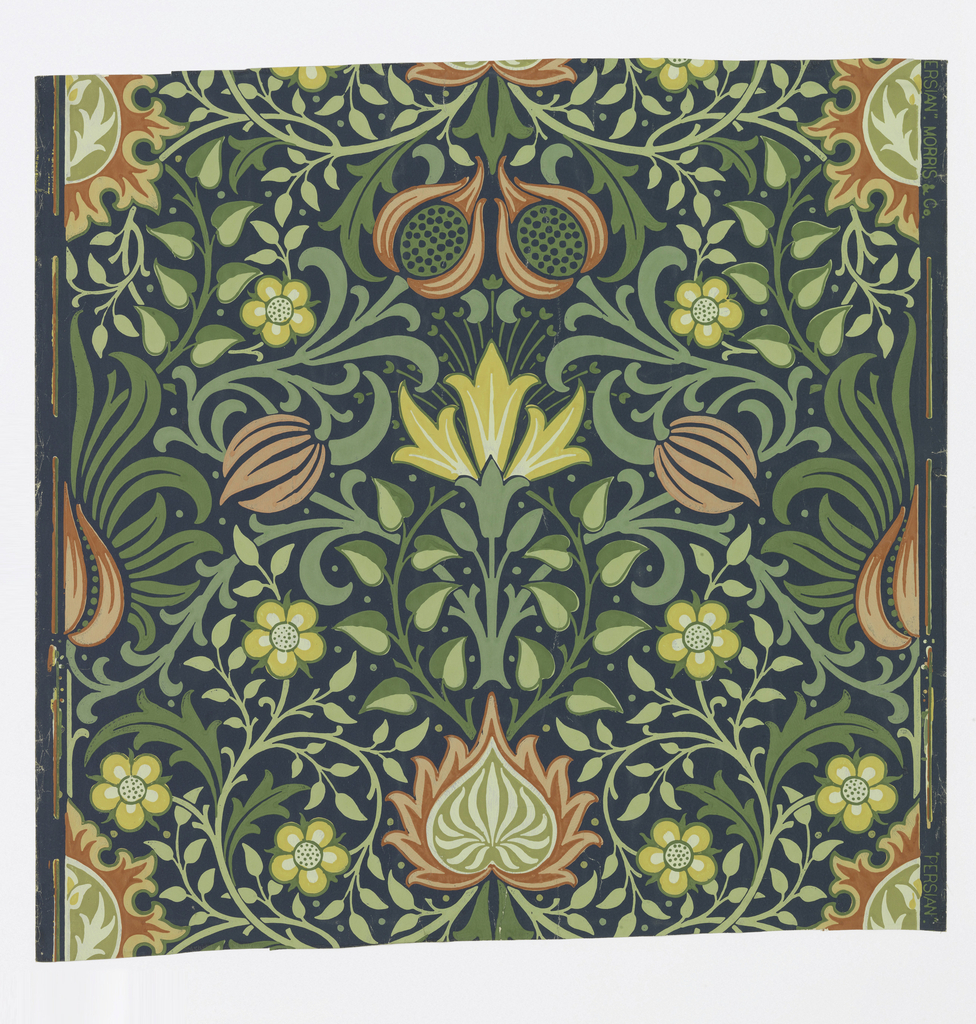This paper focuses on the exotic pomegranate plant, which is native to Persia (present-day Iran). Persian was introduced in 1895 and is woodblock printed in six colors. It was a common design motif to show the life cycle of plants in floral wallpapers. The densely woven pattern containing the pomegranate fruit, stylized floral and scrolling foliage motifs, all in a flat design is characteristic of Morris & Co. wallpapers. While Morris tended to sketch directly from nature, many others were inspired by botanical illustrations.
William Morris was one of the most prolific designers of the late nineteenth century and first established his business in 1861. His firm Morris, Marshall, Faulkner & Co. (1861–1875) and later Morris & Co. (1875–1940) was known for its furniture, stained glass windows, tapestries, fabrics, and wallpapers. Morris & Co. produced many of their own products but they never printed wallpapers, always outsourcing them to Jeffrey & Co. In 1940, Morris & Co. entered voluntary liquidation and Arthur Sanderson & Sons purchased the entire company.
Many of the early Morris designs are still available today, some of which are still printed with the original woodblocks. William Morris was a strong advocate for using natural pigments and dyes, of which many of the original formulas contained heavy metals, such as arsenic. As the toxicity of the pigments became known, the formulas were altered to remove the metals.
This sidewall will be on view in the exhibition Passion for the Exotic: Lockwood de Forest, Frederick Church beginning December 12, 2014.
Gregory Herringshaw is the head of the Wallcoverings Department at Cooper Hewitt, Smithsonian Design Museum.
